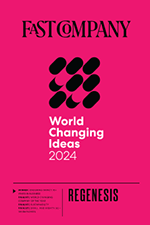Back Diffusion Explained
The process of back diffusion and its effect on achieving remedial targets
Complex, heterogeneous sites can provide a challenge to the achievement of stringent remedial targets for groundwater contamination. The USA’s National Research Council (NRC) has identified back diffusion – also known as matrix back diffusion – as one of the prominent processes that limit our ability to clean up groundwater at those sites. This video explains the process of back diffusion and its effect on achieving remedial targets. Video length: 1m 59s
In situ remediation using a range of injectable substrates can overcome back diffusion by providing long term treatment of the mobile and immobile porosities in the subsurface. Explore REGENESIS’ technology solutions for contaminated aquifers where back diffusion is a concern:
PlumeStop Liquid Activated Carbon
PlumeStop® is a liquid form of activated carbon. It is composed of 1-2μm particles of activated carbon suspended in water through the use of a unique organic polymer dispersion chemistry. Dissolved contaminants are adsorbed onto the surface of the activated carbon biomatrix. Growth of contaminant degrading bacteria on the biomatrix rapidly degrades the adsorbed contaminations, regenerating sorption sites for further contaminant treatment. This results in mobile contaminants being rapidly removed from the risk pathway and degraded at an enhanced rate.
- PlumeStop Technical bulletin 6.1: Treatment Solution for back diffusion – Tank Study
- Product page: PlumeStop Liquid Activated Carbon
3-D Microemulsion and HRC
3-D Microemulsion® (3DME) is a wide-area distribution, staged-release, electron donor emulsion for the optimized enhanced anaerobic biodegradation of chlorinated compounds.
- Product page: 3-D Microemulsion
The HRC® range of electron donors offers varying release profiles to suit project-specific needs. Ranging from highly viscous to viscous versions, these controlled-release lactic acids stay in place where injected for highly targeted treatment of chlorinated compounds.
- Product page: HRC
Do you have questions or want to explore some ideas? Contact Us to get in touch with a local representative.

 Americas
Americas Europe
Europe Français
Français Deutsch
Deutsch Italiano
Italiano Español
Español


